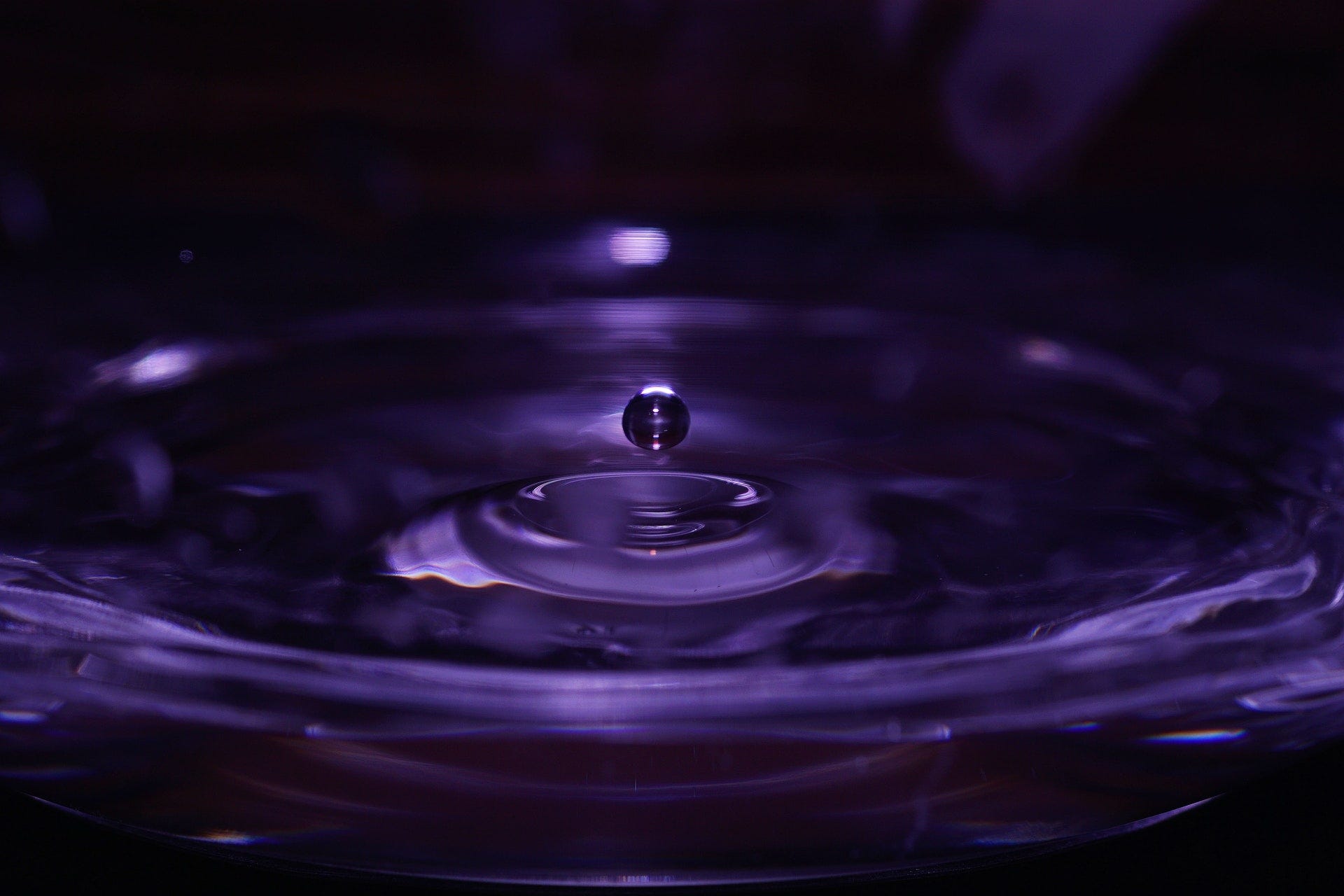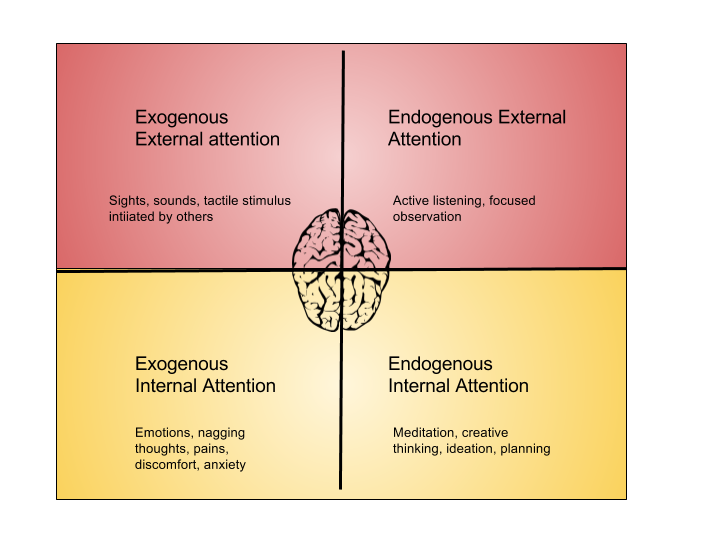
There is so much information available, and new information is coming to light at a break-neck pace. How do you decide which information is important, and process the information that is? The answer is simple: you have to pay attention. Not just be aware, but actually focus — be attentive, process and make connects.
You need to be able to fully engross yourself in conversations, read between the lines of text to see what isn’t said that is important, and you have to be able to construct a context in order to gain better understanding of what’s happening — both in professional and personal environments.
But how do you train yourself to be that attentive? How can you develop that kind of insane focus? The first step is to understand how attention works.
As it turns out, attention has 3 components to it. There are also 2 modes of attention — modes that can compete with each other. Knowing how attention works and which type you need to use will go a long way in helping you to harness the exponential power of attention.
Contents
- The Anatomy of Attention
1A. The 3 Components of Attention
1B. The 4 Types of Attention - How to Harness the Right Kind of Attention
2A. The “Mode Switch”
2B. Preparation and Pre-Processing
1. The Anatomy of Attention
The Three Components of Attention
There are three parts of attention: selection, modulation, and vigilance. Each piece is vital to the activity of attention, and both must be honed in order to gain the kind of focus that is truly valuable.
Selection is the initial part of attention. It’s the process of discriminating between the wide array of different stimuli coming at you at any given moment, and singling one out. Sounds, sights, smells, sensations of all kinds are bombarding you, competing for your attention. The power to select the ones that matter to you is a large component of attention. The better you can get at that kind of discrimination, the better you become at harnessing your attention.
Modulation is what happens to the stimulus in your brain once it’s selected — how it is processed. Modulation refers to how quickly and thoroughly information is processed once it’s selected, as well as how it is integrated with other information in the brain. You can be great at selection — at focusing on something and tuning out the noise — but you also have to be good at modulation in order to make use of your attention.
Vigilance is the ability to select and modulate for extended periods of time. It can apply to both the ability to stay alert and continue to intentionally select information or stimuli, and also to sustain a level of modulation or processing of information for a period of time.
The Four Types of Attention
Most literature on attention identifies two modes of attention, identified by how an instance of attention originates. These two modes are known as exogenous and endogenous. There is also a way to identify attention based on whether the target of your attention is internal or external — meaning that you’re either focused on some subject inside your body or consciousness, or something outside of your body.
Exogenous attention is stimulus-driven. It’s the attention you pay to something that tugs at your brain. When you’re out walking in the woods and you hear a branch crack or see a rustling in the brush, you direct your attention there. That’s exogenous attention. It is inherently pulled along by things, rather than pushed by your will and intentions.
Endogenous attention (sometimes equated with executive control of cognition) is goal-directed, intentional attention. When you’re talking with someone and you focus on what they’re saying because you want to find out information, that’s endogenous attention. For the most part, that’s the type of attention we value in the context of work.

How to Harness the Right Kind of Attention
Both types of attention are vital. You need to be able to be pulled by stimuli (exogenous), as well as push yourself to focus on stimuli (endogenous). Developing exogenous attention will aid in being more alert, responsive, and ultimately, adaptable. However, developing endogenous attention will help you get better at the kind of deep focus that can help drive you to do your best work.
Referring to the diagram above, you should work to keep your attention on the right hand side of the vertical axis — that’s the endogenous section. When you do that, your attention is more active, goal-directed, and purpose-filled. The results will tend to be much better, in terms of modulation and vigilance.
The “Mode-Switch”
A useful strategy is what I call the mode-switch. If you find your attention being pulled by something (exogenous attention), stop and check if it aligns with your goal at that time (thus, tapping your endogenous attention). If so, then exercise that endogenous, goal-directed attention to select and modulate the information.
A helpful way to effectively switch modes is to identify where the stimulus is coming from. Is your attention being pulled by something external or internal? That is, are you being pulled by some outside force acting upon you, or something that your mind has raked up from the muddy depths of your consciousness?
Often times, we get distracted when our endogenous attention gets mode-switched involuntarily. This happens when the sources of stimulus get mixed.
Think of trying to read a book, when someone turns on the television. You were doing some endogenous, internal processing. Then the sounds and images on the TV begin to compete. Your power of selection weakens, and the ability to effectively modulate what you were focused on radically decreases.
The same thing happens in a different way when someone is talking to you and your mind begins to wander. You are engaged in endogenous attention, doing external processing, but something internal tugs at your brain and switches you to an internal, exogenous mode of attention.
Preparation and Pre-Processing
A common cause for failing to exercise good endogenous internal attention is a crowded mind. If you have a lot of thoughts popping up in your head and “stealing away” your attention, it can be intensely hard to focus. You’ll find yourself being switched back and forth from endogenous external attention to the person you’re taking with, to exogenous internal attention to your wandering monkey-mind.
But there is a way to ready your mind to stay in that mode of endogenous external attention, so you can reap the benefits of communication more effectively.
Paying focused attention begins with what you do in the hours before whatever it is you’re trying to focus on. You have to be able to clear your mind so that you can have a practically empty and still mind while your’e listening to someone, or focused on thinking through a problem. In order to do that, you must prevent feelings of anxiety about things not done, or random desires, impulses, or other distractions.
You have to process all of the things on your mind that are currently unprocessed. Doing that allows you to maximize your power of modulation when you are using your endogenous attention to focus on and process new information.
When you can clear your mind and you begin to pay real attention to something or someone, you feel it. It’s as if you can “point” your attention at someone as they talk — like a weapon. It almost feels like a superpower — and people really notice. They tend to react favorably. In turn, you appear more genuine, compassionate, patient. It is truly a win-win. You also learn a hell of a lot more.
Did you find value in this piece? Consider subscribing to my weekly newsletter — Woolgathering. It’s one email per week, with great ideas to add value to your life and work.
